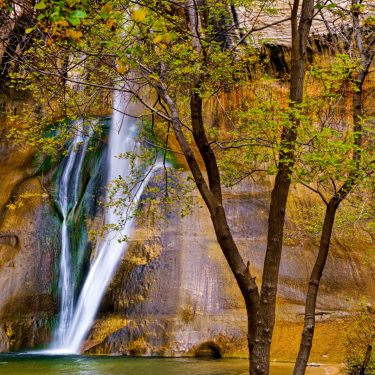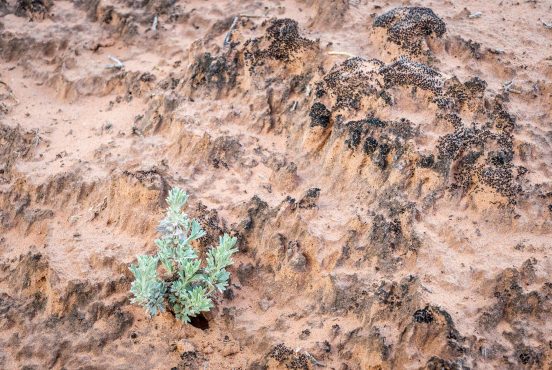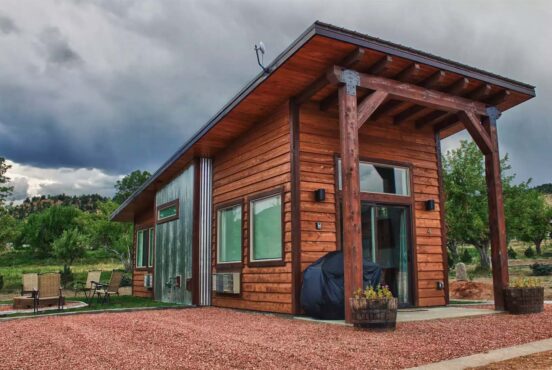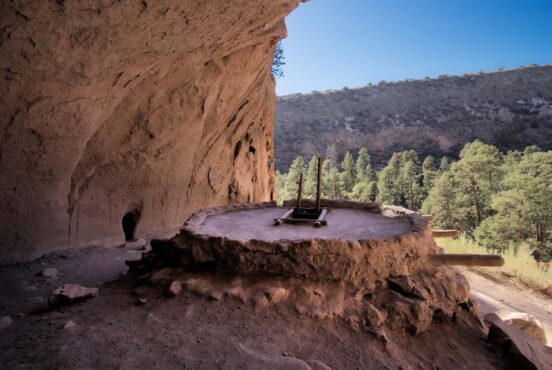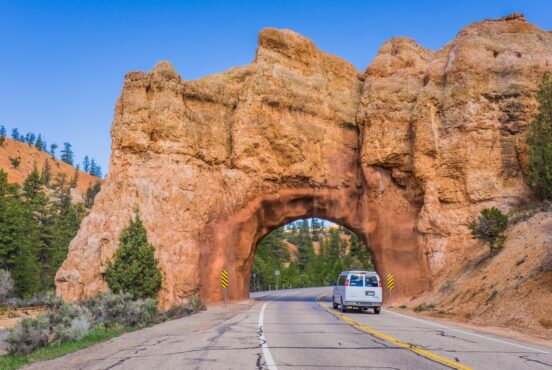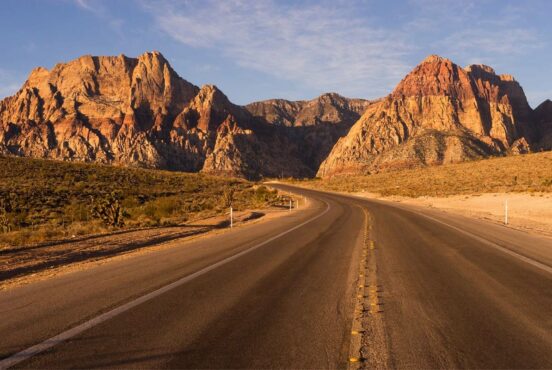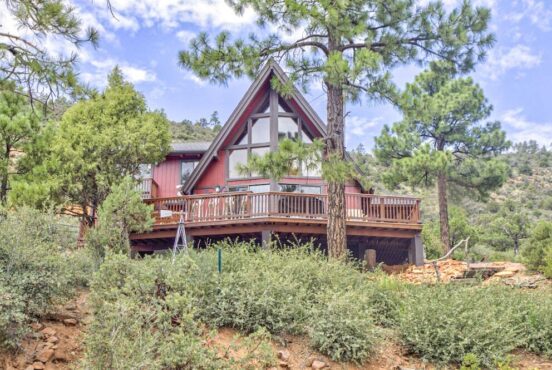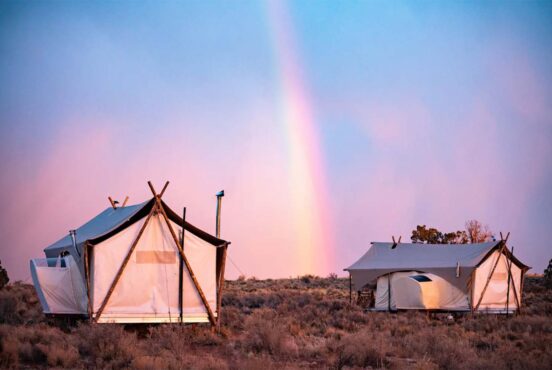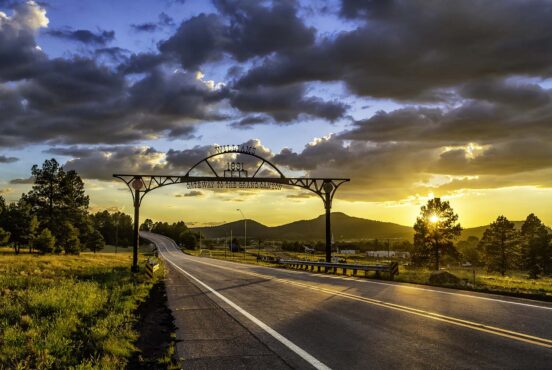Looking for a tangible trophy to take home from your adventures in the Utah desert? Try hunting for geodes!
Utah is renowned for its striking and unique geological history, so it shouldn’t come as a surprise that the desert landscape is home to some of the most beautiful geodes in the American Southwest.
Geode hunting can be a fun rest-day activity between climbing desert towers and racing down mountain bike trails. It requires only a few tools, a little know-how, and some good old fashioned patience.
First, What Is A Geode?
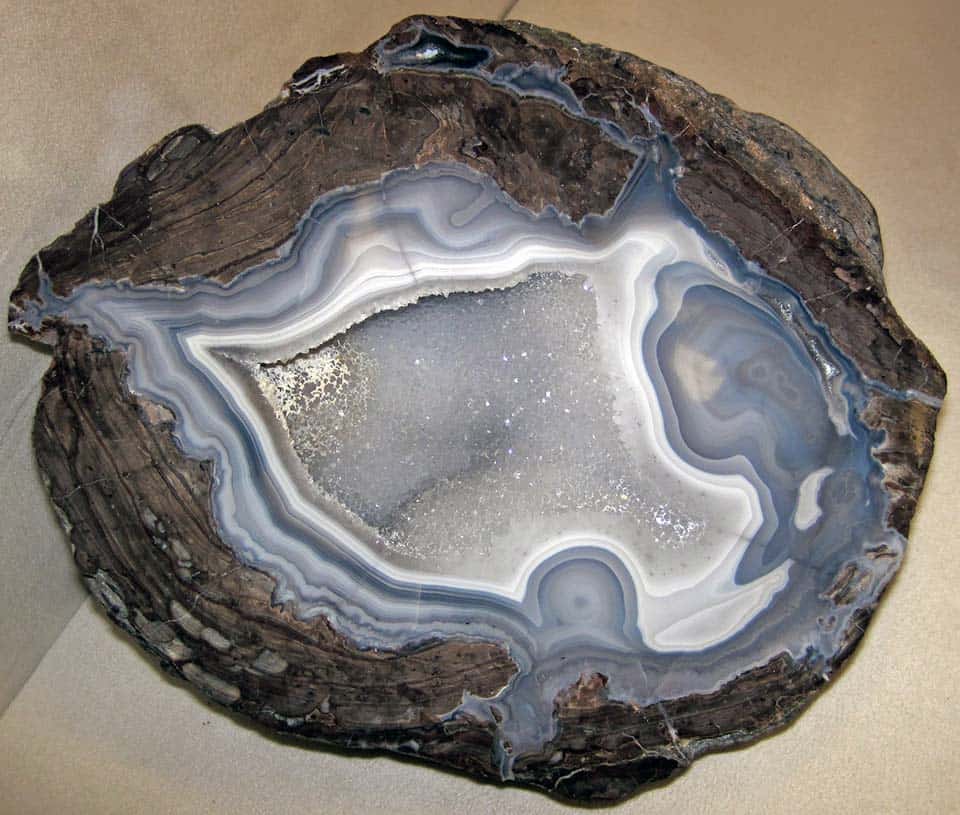
Geodes are rounded rocks that form inside air pockets of sedimentary rock or volcanic flows. Thanks to a porous outer shell that allows water to flow through it, the minerals in the water form crystals in the air pocket. It takes millions of years for these crystals to form, which is part of the reason why finding one is so thrilling!
When you crack open a geode, you will see crystals lining the porous outer shell. Geodes will usually be hollow because of this, though some geodes will have bits of rock or crystal in them that you can hear move around when you shake them.
You can even find ancient water in geodes! That may not sound terribly exciting, but it’s neat to know that you’re looking at water that’s possibly millions of years old.
There are other types of geodes you may find while hunting in the desert, including nodules — geodes that have become completely filled over time and aren’t hollow. On the outside nodules look the same as a geode, but it’ll feel heavier due to the inner cavity being filled.
What’s Inside?
Geodes vary widely in their secret contents. Often filled with clear quartz or vibrant purple amethyst, you can also find jasper, chalcedony, calcite, dolomite, and celestite.
The hollow cavity of a geode is often lined with agate as well. The agate of a geode is colored by the different minerals that make their way into the geode. Different minerals create unique colors that we see in geodes.
Generally speaking, most geode hunters in America find quartz crystal geodes. Quartz itself can vary widely in color, ranging from clear to cloudy, pink, purple, and white.
Chalcedony is commonly found in California with a blue tint. Bright purple amythest is mostly found in South America.
What Do You Need To Hunt For Geodes?
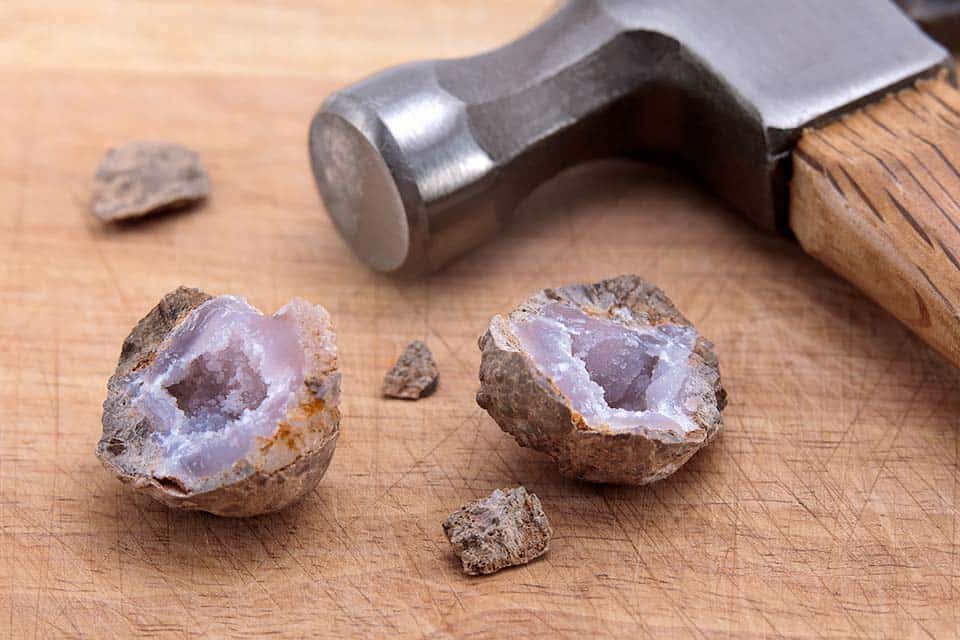
When you’re hunting for geodes, you’ll need a handful of tools to help you dig through the soil, break up loose rock, collect geodes, and open the geodes to discover your treasure.
A small shovel or pickaxe is the best tool for breaking up the ground when looking for geodes. A pickaxe may also be used to break open geodes on the spot, while a shovel can easily dig and move layers of sediment around to reveal geodes.
A rock hammer is the best type of tool to use on geodes for cracking open geodes. Just be sure to wear protective eyewear when wielding a hammer, as you’re bound to send splinters of rock flying into the air when you’re hammering away.
Rock chisels can also be used to open your geodes. A chisel will help create a cleaner break compared to a hammer.
Sawing open geodes is another option, though many people prefer to break open geodes with a hammer or chisel to create a more natural-looking break.
For those who prefer to avoid buying any tools, you can even use another rock to break open a smaller geode. If you go this route, I suggest wrapping the geode in a bandana or putting it into a sock to avoid making a mess.
Identifying Geodes
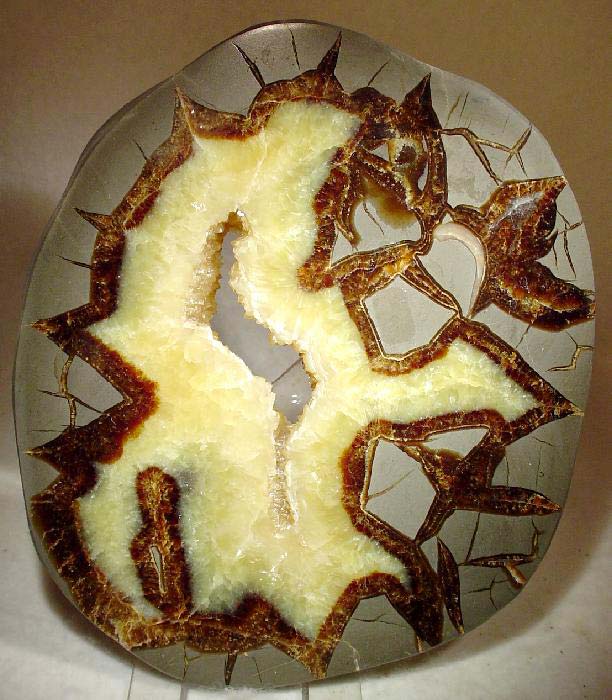
The outer layer of a geode is unassuming compared to its beautiful inner contents. Avoid smooth rocks, instead searching for rocks with a bumpy texture that resemble cauliflower.
Geodes are also fairly round as they’re formed by air bubbles in the rock, so look for spherical rocks as you’re hunting for geodes.
The hollow cavity is also a strong identifier. If you pick up a rock you might think is a geode, compare it to a rock of similar size that isn’t a geode. The geode will be lighter because of the hollow cavity inside.
Another trick is to shake the rock you’re investigating. Sometimes you can hear loose crystals or sand shake around in the cavity, indicating you’re holding a geode.
Geodes come in all different sizes, with the Utah desert producing everything from golfball-sized geodes to massive basketball-sized geodes.
Why Are There Geodes In Utah?
Seven million years ago, western Utah was home to a lot of volcanic activity that created rhyolite — an igneous rock created by volcanic flows. While cooling, gasses became trapped in the rock, creating the air pockets that are perfect for forming geodes.
Groundwater circulated through the rhyolite over millions of years, leading to crystallization inside the geodes. As more time goes on, the rock containing these geodes continues to erode, making the geodes easy to uncover as you’re traipsing through the desert.
The Best Geode Hunting Spot In Utah
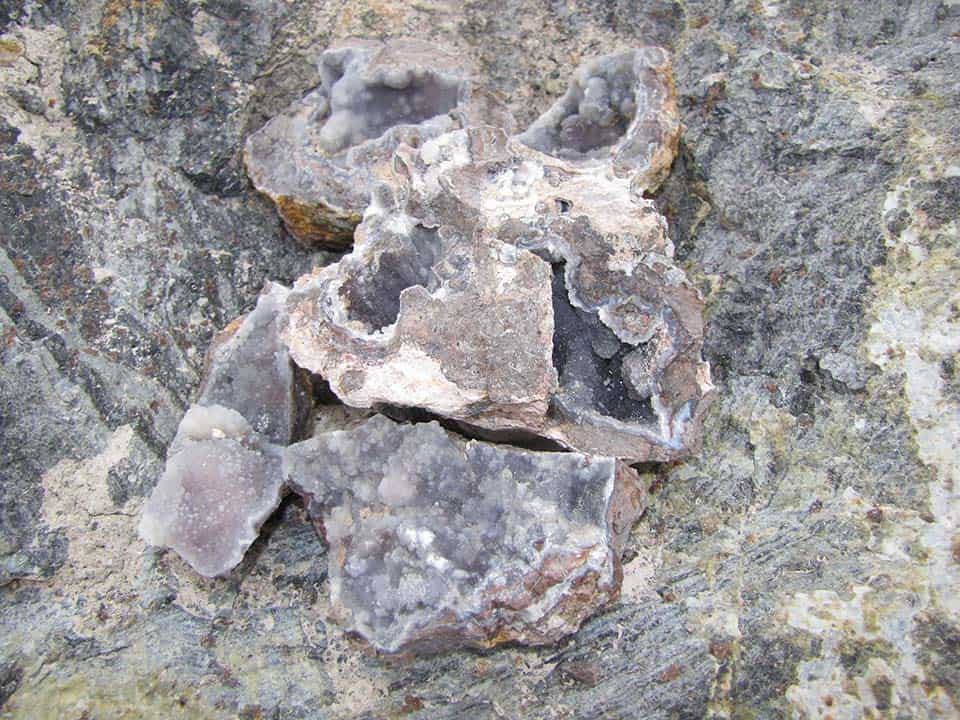
Dugway Geode Beds is the most popular area to hunt for geodes in Utah, and it’s a strong contender for the best geode hunting spot in the entire United States. This famous area is a 2.5-hour drive from Salt Lake City, making it easily accessible to locals and visitors.
That said, while it’s easy to get to the Dugway Geode Beds it’s a remote location deep in western Utah. There are no convenience stores, gas stations, or water sources of any kind nearby. It’s imperative that you come prepared with plenty of water and food for your trip, and you’ll need to pack out your waste and trash in order to leave no trace.
Where did all of the geodes around the Dugway Geode Beds come from? The answer is a massive lake that filled the area thousands of years ago. The water and waves of Lake Bonneville eroded the rhyolite rock, uncovering thousands of geodes that now line the surface of the dried-up lake.
Thanks to this erosion, the Dugway Geode Beds is one of the easiest locations to find geodes. The hillsides simply crumble away with little effort to reveal geodes of all sizes.
Unlike other geode hunting locations that take hours of hiking, most visitors find their first geode at Dugway rather quickly. The recently excavated pits and previously exposed hillsides are simply perfect for geode hunting.
Dugway is on Bureau of Land Management (BLM) land, so there are no entry fees and free camping is permitted. There are a few mining claims still active in the area, though, so it’s important to contact the BLM Field Office beforehand to be aware of locations to avoid. It’s possible to obtain permission to hunt for geodes on these claims, and that information can also be reached from the BLM Field Office.
For more information about geode hunting in Utah, visit the Utah Geological Survey website or contact the state’s gem and mineral societies.
Explore Utah
Sign up for our free email to join thousands of readers getting epic travel, hiking, camping and gear ideas every week.

